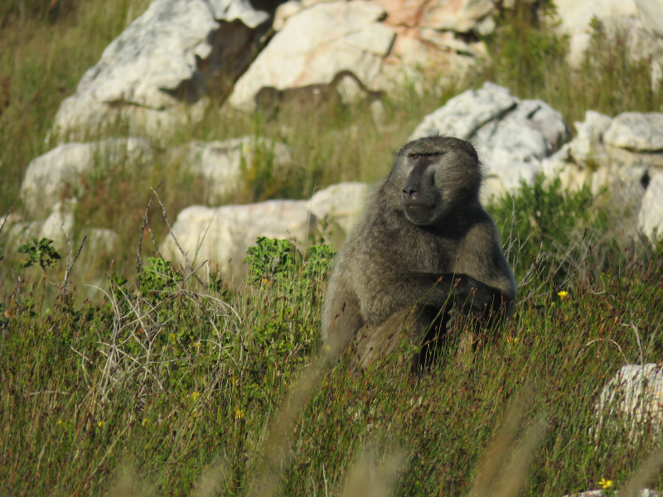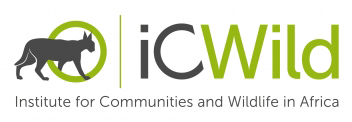|
Jump to: iCWild's work · Key insights · Project team · Collaborators and funders · Outputs |
Virtual fences are proving to be a successful, non-invasive and cost-effective way of managing the movement of livestock and wildlife. For instance, virtual boundaries have been used to manage cattle grazing across pastures, and alongside busy roads to prevent road-related wildlife deaths and injuries.

In Gordon’s Bay, in the Western Cape, South Africa, virtual fences are being explored as a tool to manage the movement of the local chacma baboons (Papio ursinus), in order to reduce human-baboon conflict. Other management tools, such as monitors and awareness campaigns, have been used, but the opportunity to make use of technologically advanced methods of managing the baboons could present an efficient permanent solution. So in 2016, a virtual fence, paired with auditory deterrents, was installed by Human Wildlife Solutions to try to maintain an invisible boundary between the town and the rest of the baboon troop’s home range.
The virtual fence is made up of a line of speakers running from the edge of the Steenbras dam, downslope to the R44 road along the coast. When the baboons come within 100m of the virtual fence, the speakers play the noises of baboon predators, such as lions and hyenas, as well as unpleasant noises, such as bear bangers and whistlers. Should this system prove effective in keeping the baboon troop out of town, it could present a humane way of dealing with urban baboon-human conflict throughout the Western Cape, and perhaps be applied to human-primate conflicts elsewhere.
iCWild's work

Our aim is to assess whether the Gordon’s Bay virtual fence is effective at managing troop movement patterns and minimising human-baboon conflict. The virtual fence was initially used to deter the troop from entering Gordon’s Bay in January 2016 and has been used since on occasions when baboons have come within one day’s foraging distance from the town. To do this we are.
We are analysing GPS data collected between 2007 and 2018 for four collared baboons, to determine:
- Whether the presence of the fence affected the position or extent of the troop’s home range.
- Whether the presence of the fence affected the proportion of time the baboons spend in three designated management zones, namely: the low (furthest from Gordon’s Bay), medium and high-risk (nearest to Gordon’s Bay) zones.
- If, and how frequently, baboons cross the virtual fence border into Gordon’s Bay.
- If and how the troop’s movement patterns change when the virtual fence has been triggered.
The project is still in an early stages, but we hope to make preliminary findings available soon.
Project team
|
Caton Schutte (iCWild), MSc Candidate and project contact Justin O’Riain (iCWild), Supervisor Phil Richardson (Human Wildlife Solutions), Co-Supervisor |
Collaborators and funders
With assistance from Hayley Wittridge from Steenbras Nature Reserve.
Related outputs
Click here to view iCWild's full output list, and use the filter tool to view outputs related to Virtual Fences.

